Compound of five tetrahedra
| Compound of five tetrahedra | |
|---|---|

| |
| Type | Regular compound
|
| Coxeter symbol | {5,3}[5{3,3}] {3,5}[1] |
| Index | UC5, W24 |
| Elements (As a compound) |
5 tetrahedra: F = 20, E = 30, V = 20 |
| Dual compound | Self-dual |
| Symmetry group | chiral icosahedral (I) |
| Subgroup restricting to one constituent | chiral tetrahedral (T) |

The
It can be seen as a faceting of a regular dodecahedron.
As a compound
It can be constructed by arranging five
It shares the same vertex arrangement as a regular dodecahedron.
There are two enantiomorphous forms (the same figure but having opposite chirality) of this compound polyhedron. Both forms together create the reflection symmetric compound of ten tetrahedra.
It has a
spherical tiling
|
 Transparent Models (Animation) |
 Five interlocked tetrahedra |
As a stellation
It can also be obtained by stellating the icosahedron, and is given as Wenninger model index 24.
| Stellation diagram | Stellation core | Convex hull |
|---|---|---|

|
Icosahedron
|
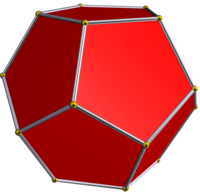 Dodecahedron |
As a faceting
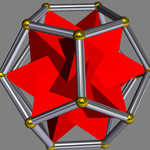
It is a faceting of a dodecahedron, as shown at left.
Group theory
The compound of five tetrahedra is a geometric illustration of the notion of
The symmetry group of the compound is the (rotational)
An unusual dual property

This compound is unusual, in that the
See also
References
- ^ Regular polytopes, p.98
- ISBN 0-521-09859-9.
- ISBN 0-486-61480-8, 3.6 The five regular compounds, pp.47-50, 6.2 Stellating the Platonic solids, pp.96-104
- MR 0676126. (1st Edn University of Toronto (1938))
External links
- Weisstein, Eric W. "Tetrahedron 5-Compound". MathWorld.
- Metal Sculpture of Five Tetrahedra Compound
- VRML model: [1]
- Compounds of 5 and 10 Tetrahedra by Sándor Kabai, The Wolfram Demonstrations Project.
- Klitzing, Richard. "3D compound".
| Notable stellations of the icosahedron | |||||||||
| Regular | Uniform duals | Regular compounds
|
Regular star | Others | |||||
| (Convex) icosahedron | Small triambic icosahedron | Medial triambic icosahedron
|
Great triambic icosahedron | Compound of five octahedra | Compound of five tetrahedra | Compound of ten tetrahedra | Great icosahedron | Excavated dodecahedron | Final stellation |
|---|---|---|---|---|---|---|---|---|---|

|

|

|
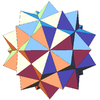
|
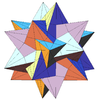
|

|

|
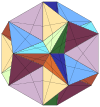
|

| |
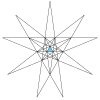
|

|

|

|

|

|

|

|

| |
| The stellation process on the icosahedron creates a number of related compounds with icosahedral symmetry .
| |||||||||
